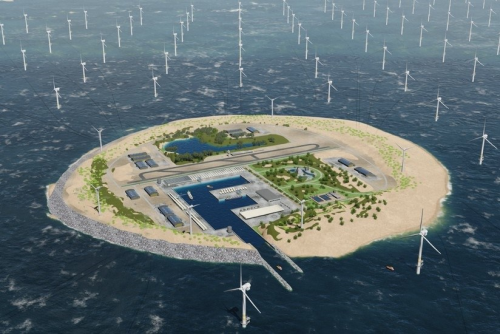Denmark has unveiled one of the most ambitious renewable energy projects the world has ever seen — a man-made offshore energy island that will serve as the first of its kind globally. Positioned in the North Sea, this revolutionary floating hub is designed to generate and distribute clean electricity to nearly 3 million households, marking a new era in sustainable power infrastructure.
At the heart of the project lies a network of massive offshore wind turbines, some of the largest ever constructed. These turbines will surround the artificial island, capturing the North Sea’s powerful winds and converting them into vast amounts of renewable energy. The island itself will serve as a command center — housing cutting-edge energy storage systems, grid balancing technology, and interconnectors that will export green electricity across Europe.
Beyond power generation, the island will also be equipped to support future energy technologies, including green hydrogen production, allowing Denmark to play a leading role in the continent’s clean-fuel transition.
Engineers describe the project as a “floating power plant,” spanning multiple football fields in size. Its modular design allows for expansion, ensuring that the island can grow as demand increases and wind technology evolves.
The initiative is far more than an engineering marvel — it is a historic commitment to climate action. By decentralizing power production and reducing dependence on fossil fuels, Denmark aims to accelerate Europe’s shift toward carbon neutrality. Energy experts believe the island could become a blueprint for other nations looking to scale up renewable infrastructure in constrained or environmentally sensitive regions.
This energy island is also expected to become a catalyst for economic growth, creating high-tech jobs and strengthening Denmark’s leadership in offshore wind innovation. With construction set to begin soon, the world is watching closely as the country turns futuristic climate solutions into reality.
The project sends a powerful message: the future of sustainable energy isn’t theoretical — it’s being built right now, on the waters of the North Sea.







